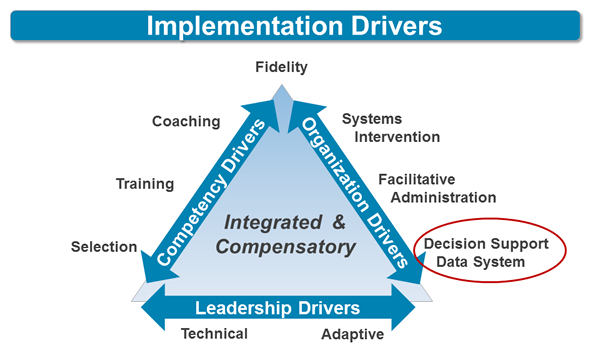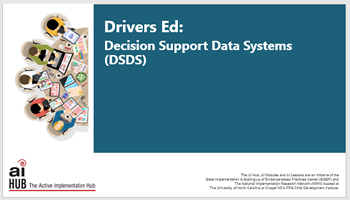Date Published:

|
SISEP eNotesNotes, News and Discussion from the |
|||
|
November, 2016 Decision Support Data Systems: An Organization Driver
A Decision Support Data System (DSDS) is a system for identifying, collecting, and analyzing data for decision-making by program administrators and practitioners. These systems enable organizations to make informed and intentional decisions about critical implementation supports.Program impact, successes, and challenges are communicated to administration, staff, stakeholders, and funders by Implementation Teams. The use of a DSDS allows teams to detect, prevent, and address barriers. The result is that practitioners have the implementation supports required to produce notable improved outcomes. DSDS gather three types of data: fidelity, outcome, and programmatic. Programs need all of these types of data to celebrate successes and diagnose issues that emerge during implementation. This helps an organization understand if there is a process or performance issue, or an issue with the program and its fit. |
||||
Three types of DSDS data
|
||||
|
DSDS are used and communicated across multiple levels of an organization to create an enabling context for practice. This hospitable environment is provided through the development of policy that supports and sustains all implementation efforts over time. Therefore, DSDS data and information must be reliable, valid, and timely so it can be used for problem solving and action planning in a Plan, Do, Study, Act Cycle. Get ready to use DSDS by asking: Get Started
Get Better
|
||||



